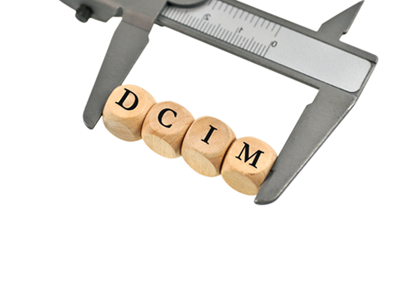This is the final part of a discussion hosted by FOCUS magazine between DCIM leaders from Schneider Electric, Synapsense, Intel and Fieldview.
In this part Soeren Brogaard Jensen poses the questions to be anwered by the other discussion participants.
Q: SOEREN BROGAARD JENSEN, Schneider Electric: How do we as vendors create a DCIM platform that helps our clients unite people, process and technology?
A: FRED DIRLA, CEO, Fieldview Solutions: The unification between people, processes and technology can never truly be achieved through hardware or software offerings. Vendors must strive to understand their clients’ business goals and actually become a “trusted advisor,” along their path toward success. With this knowledge, vendors can develop software more acutely attuned to the client’s needs as well as help them implement processes to better leverage information collected utilizing DCIM tools.
A: JEFF KLAUS, Director, Data Center Solutions, Intel: Data center operators traditionally have collected and analyzed real-time, server-level power data using manual estimates because this was the best way to decipher the disparate data coming from a broad list of equipment and devices. Unfortunately, there has been no real incentive for OEMs to unite on a standard for how the data is presented. The group I’m responsible for, Intel Data Center Solutions, has spent the last several years developing hardware-agnostic software that collects and aggregates power and thermal usage data and feeds it as a plug-in to DCIM solution providers.
A: PETER VAN DEVENTER, SynapSense: Essentially these statements capture the ideal scenario in which DCIM vendors provide complementary products and technologies that bring together previously disparate organizations in devising processes targeted at achieving mutually beneficial objectives. IT and Facilities are the disparate groups that typically receive the most attention. However, other entities to be unified via a comprehensive DCIM platform include power and cooling, as well as activities like data acquisition and planning.
Q: SOEREN BROGAARD JENSEN, Schneider Electric: How do we as vendors connect DCIM to the business for strategic decision making?
A: JEFF KLAUS, Intel: We each have to prioritize and simplify our value propositions to answer: How does my solution improve profitability? Operating IT assets more effciently is one general answer, but we need to dig deeper. Now consider that in the average data center, as much as 10-15 percent of the servers are “dead”—consuming power but not producing any compute benefit. Talk about inefficient! Many of the modeling-based tools available to measure server workloads aren’t accurate enough to pinpoint where problems are. The good news is DCIM is advancing sufficiently to deliver real-time power and thermal consumption data, so data centers can better detect “vampires” in the data centers, and do something about them.
A: PETER VAN DEVENTER, SynapSense: The fundamental approach to connecting DCIM to the business for strategic decision making is by clearly linking the benefits of DCIM with the financial returns that it provides to adopters. Return on Investment (ROI) is a crucial aspect of communicating the true financial value of DCIM to a sustainable forward looking strategy for the business. Factors like availability, uptime and rapid recovery must be a given in any DCIM platform. A tangible ROI allows decision makers to connect the dots between the operational sustainability and financial sustainability of their data center activities.
A: FRED DIRLA, Fieldview Solutions: DCIM is a single tool and a full suite of hardware and software devices/applications that need to work in harmony to ensure business goals are met. In order to connect DCIM to the business for strategic decision-making, the vendor must have an in-depth understanding of the client’s business.
Q: SOEREN BROGAARD JENSEN, Schneider Electric: One of the criticisms of DCIM is that it is expensive and difficult to get investment for – how can that be changed?
A: PETER VAN DEVENTER, SynapSense: The first criteria for a DCIM investment is the associated ROI. Our customers are looking for two primary benefits – direct energy savings and increased resiliency. Both are measurable. In addition, the DCIM platform of the future will enable automated cooling infrastructure controls that enable the data center to adapt on a real-time basis to changes in equipment and/or application loads. As companies sift through the various DCIM options, they will learn that different vendors are offering differing value propositions.
A: FRED DIRLA, Fieldview Solutions: Expense is a relative term compared to what you are mitigating. Think about this: Would you drive an automobile that did not have a dashboard display depicting miles per hour, engine temperature, oil level, battery charge and other vital statistics needed to ensure its continued operation? Of course not; and the same holds true for performance metrics and micro data analysis for data centers. Before clients had access to this information, it was considered as a nice-to-have. Today, data centers engineers, facilities managers and IT personnel would not consider running their environments without this type of visibility. The DCIM value proposition illustrates how expensive it is not to have this type of tool in place.
A: JEFF KLAUS, Intel: The question is not about how expensive or cheap a solution is, but about the value and ROI the DCIM solution can bring. Typically, if you can get more than what you need to invest, this is a good deal, regardless of the price. DCIM solution evaluation should result in a clear understanding of ROI for the specific data center environment. My advice is for operators to prioritize their problems, (e.g., I’m running out of server space, but I don’t have the budget/space/power to add more servers to my data center, can I get more out of my current servers?), and build a DCIM pilot project to address the problem. Money follows success! With the more advanced DCIM solutions available today, there’s almost no limit to the innovation and usages that can be built on top of the data now available.
The full discussion is available to read in the digital edition of FOCUS 21.
Part IV: Peter Van Devanter, CEO, Synapsense asks the questions.

